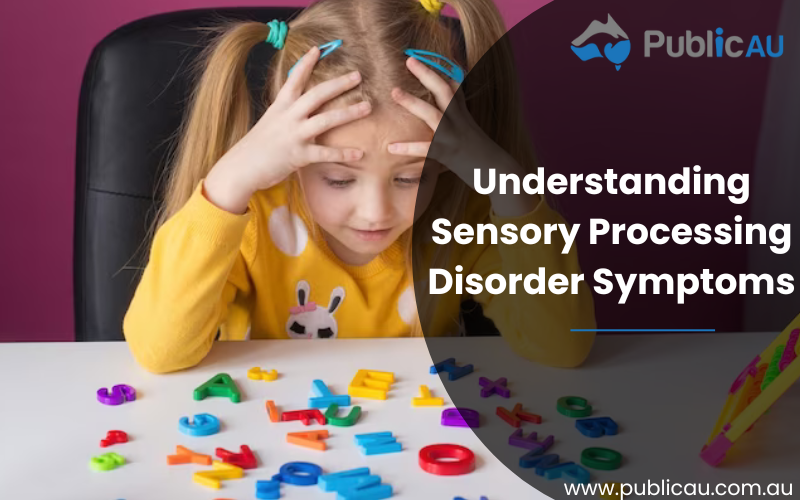
Do you ever feel overwhelmed by loud noises or textures that others don’t seem to notice? Are everyday sensations like clothing tags or fluorescent lights unbearable for you or your loved one? You may be experiencing symptoms of Sensory Processing Disorder (SPD). In this comprehensive guide, we’ll explore the various signs and symptoms of SPD, helping you better understand and navigate this often misunderstood condition. Join us as we delve into the world of sensory processing challenges and discover strategies for managing them effectively.
What Is Sensory Processing Disorder?
Sensory Processing Disorder (SPD) is a neurological condition that affects how the brain processes and responds to sensory information from the environment. It is also known as Sensory Integration Dysfunction or Sensory Integration Disorder. SPD can affect people of all ages, but it is more commonly diagnosed in children.
The senses are our body’s way of taking in information about the world around us and making sense of it. These include sight, sound, touch, taste, and smell. However, for individuals with SPD, these senses may be either over-responsive or under-responsive, leading to difficulties in regulating and interpreting sensory input.
There are three main types of SPD:
- Sensory Modulation Disorder
- Sensory Discrimination Disorder
- Sensory-Based Motor Disorder
Each type has its own unique set of symptoms and impacts on daily functioning.
Common Sensory Processing Disorder Symptoms
Symptoms of Sensory Processing Disorder (SPD) can vary widely from person to person, making it a complex condition to understand. However, there are some common symptoms that can help identify someone who may be experiencing SPD. In this section, we will discuss the most prevalent symptoms of SPD and how they manifest in different sensory systems.
🎨 Sensory Overload:
One of the most notable symptoms of SPD is sensory overload. This occurs when an individual’s brain receives more input from their senses than it can effectively process. As a result, the person may become overwhelmed and experience intense emotional reactions or shut down completely. For example, loud noises, bright lights, or strong smells may trigger a sensory overload for someone with SPD.
🎨 Hypersensitivity:
Hypersensitivity refers to an extreme sensitivity to certain stimuli that would typically not bother others. This symptom can manifest in any of the senses and can vary greatly among individuals with SPD. For instance, someone with auditory hypersensitivity may find everyday sounds like vacuum cleaners or alarms unbearable while those with tactile hypersensitivity may be uncomfortable wearing certain fabrics.
🎨 Hyposensitivity:
On the other hand, hyposensitivity is when an individual has a diminished response to sensory input and requires more significant stimuli to feel sensations normally perceived by others as moderate or mild. For example, someone with hyposensitivity in their sense of touch may have trouble feeling pain or temperature changes.
🎨 Poor Motor Skills:
Many individuals with SPD also struggle with motor skills such as coordination and balance due to difficulty processing proprioceptive input – information coming from muscles and joints about body position and movement in space.
🎨 Poor Social Skills:
Individuals dealing with sensory processing disorder may experience difficulties in social situations. For instance, they may have trouble understanding personal space boundaries, making eye contact, or regulating their emotions.
🎨 Hyperactivity/Inattention:
Some children diagnosed with ADHD (Attention-Deficit/Hyperactivity Disorder) might actually have undiagnosed SPD instead since both conditions share similar traits such as hyperactivity and impulsivity.
🎨 Behavioural Problems:
Children with SPD can become easily frustrated and overwhelmed by everyday tasks that others may find simple. This frustration can manifest as behavioural issues such as acting out or meltdowns.
🎨 Difficulty with Transitions:
Individuals with SPD often struggle with transitioning from one activity to another due to difficulty adjusting to new sensory environments and expectations.
Conclusion:
In conclusion, sensory processing disorder is a complex condition that can greatly impact an individual’s daily life. However, with proper understanding and support, those affected by SPD can learn to manage their symptoms and improve their overall quality of life.
By recognising the warning signs and seeking appropriate treatment options, we can create a more inclusive and supportive environment for individuals with sensory processing disorder. It is our hope that this comprehensive guide has provided you with valuable insights into this disorder and encouraged a greater understanding of it within our society.



